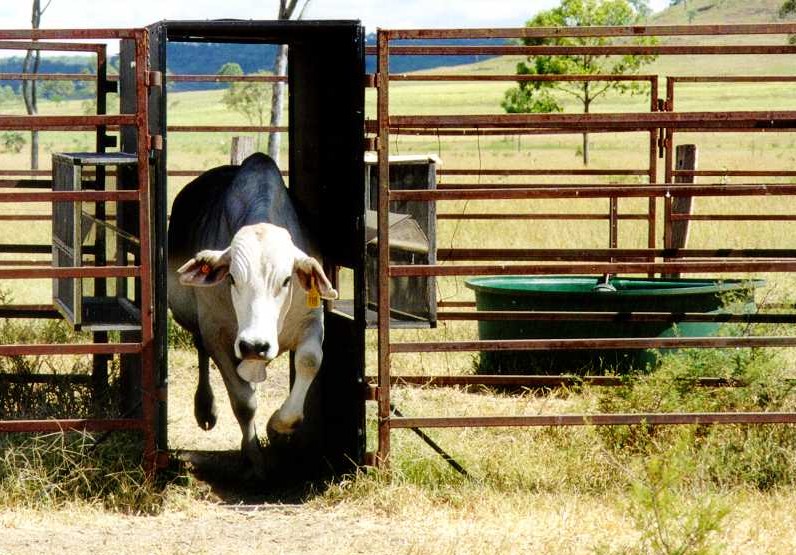Chemical-free buffalo fly control – buffalo fly tunnel traps revisited

With increased insecticide resistance to synthetic pyrethroids reported, and buffalo fly now listed as the costliest parasite pest of cattle, now is the time to revisit chemical-free management options for buffalo fly control, such as tunnel traps.
What is a buffalo fly tunnel trap and how does it work?
A buffalo fly tunnel trap consists of a short, dark tunnel that cattle walk through regularly to access water or feeding areas. When cattle walk through the shaded tunnel, the change in light intensity causes the flies to leave the animal and fly into cages on the sides of the tunnel, where they get trapped and die.
How effective are they?
Field testing shows that buffalo fly tunnel traps can reduce fly numbers on cattle by up to 50–80%. Their effectiveness depends on a few things:
- Where they are located: the trap needs to be set up where cattle will regularly pass through. Ideal locations can be near watering points, feeding stations or gateways.
- Cattle habits: cattle need to get used to walking through the tunnel for it to work.
- Keep it clean: to work effectively, dust and dead flies need to be cleared from the traps regularly.
- Fly numbers: if there are a lot of flies around, it might take longer to see results.
What sort of stock management are tunnel traps best suited to?
Buffalo fly tunnel traps are best suited to stock management systems where cattle regularly move through specific areas, such as:
- Rotational grazing systems: where cattle are frequently moved between paddocks and pass through gateways or laneways. Placing the trap in these pathways ensures the cattle use it regularly.
- Centralised watering points: if cattle have a single water source, placing the trap at the access point ensures frequent use.
- Feeding stations or mineral licks: if cattle are fed in a central location, the trap can be set up along the route to or from the feeding area or supplement.
- Dairy farms: dairy cattle can pass through the trap on their way to or from the milking shed.
Buffalo fly tunnel traps work best when used as part of an integrated pest management strategy. This may include other methods like biological controls, good pasture management and chemical treatment when required. Consult with your local agricultural consultant, extension officer or pest management expert for advice.
Where can I get one?
The Queensland Department of Primary Industries (DPI) have instructions on how to build your own tunnel trap here – Build a buffalo fly trap | Department of Primary Industries, Queensland
More information
ParaBoss Buffalo fly traps Buffalo Fly Traps – FlyBoss
Have Your Say: Help shape the future of buffalo fly management
To better understand the challenges that buffalo flies pose to your property and livestock, and to learn more about the control methods you currently use, we invite you to participate in a short online survey. In particular, we are interested in whether you’ve considered or used buffalo fly tunnel traps as part of your management strategy.
Your valuable insights will help DPI to assess industry’s interest to improve buffalo fly tunnel trap designs and develop more effective chemical-free solutions for managing buffalo flies.
The survey consists of 6 multiple choice questions, will take less than 10 minutes to complete and is anonymous. Your responses will directly contribute to shaping our future research and innovations in buffalo fly control. To participate, please click the link below:
Buffalo fly tunnel trap survey – Fill in form
Thank you for helping us support the industry and improve buffalo fly management. We greatly appreciate your time and input.
Written by Jess A.T. Morgan and Geoff W. Brown